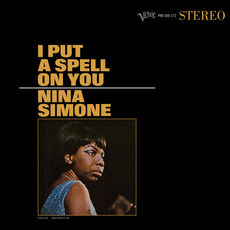It was a striking moment. At the Montreux Jazz Festival, Nina Simone, at the piano, was about to sing 'Stars', when she interrupted herself, repeatedly shouting "Sit down!". It was just one more fight among many: and this time, she was only battling an unruly audience member. But it made an impression. The year was 1976 and Eunice Kathleen Waymon, better known as Nina Simone, 43, had just left Liberia, where she had spent several years in exile. Her plan was to settle in Switzerland and rebuild herself financially. But how had she got to this point? And why was she so intransigent, and increasingly out of control? Her aura was still intact, but her four decades on Earth had been something of a Way of the Cross. It had been her against the world: she had had to fend for herself among white people but also among black people too…
Born on February 21, 1933 in Tryon, in the back-country of North Carolina, she was the sixth of eight children, from a very religious family, whose lives had been badly affected by the crisis of 1929. From the age of three, Nina had been learning the piano, which she mainly played at church. This was a true obsession, and she gave her first classical recital at the age of 12. At this concert, her parents had to give up their chairs in the front row for a white couple, and move to the back of the hall. Nina demanded that they return to their original seats, otherwise she would not play! The future civil rights movement activist already understood that segregation was a curse on American society which would complicate her life. Because her obsession was classical music and nothing else. Nina Simone wanted to be the first black classical concert performer in U.S. history. From strict schools to boarding schools for gifted children, she climbed the ladder and dreamed of completing her musical education at the legendary Curtis Institute in Philadelphia. The preparatory course for the Curtis Institute took place at New York's Juilliard School of Music, but her stay there was cut short: the only black girl in her class, she was not accepted. Nina was convinced that she had been rejected due to the colour of her skin. She gave up, and started working various odd jobs to support herself and her family, while also taking private piano lessons. In the evenings, she performed in bars. These were often dive joints, and she was forced to play what the crowds wanted: songs, blues, jazz, in short anything but classical music! She didn't want to let her mother know that she was playing the devil's music, so she adopted the stage-name Nina Simone: Nina for niña, little girl in Spanish, and Simone for Simone Signoret, who dazzled her in Jacques Becker's film Casque d'or.
Create a free account to keep reading



























